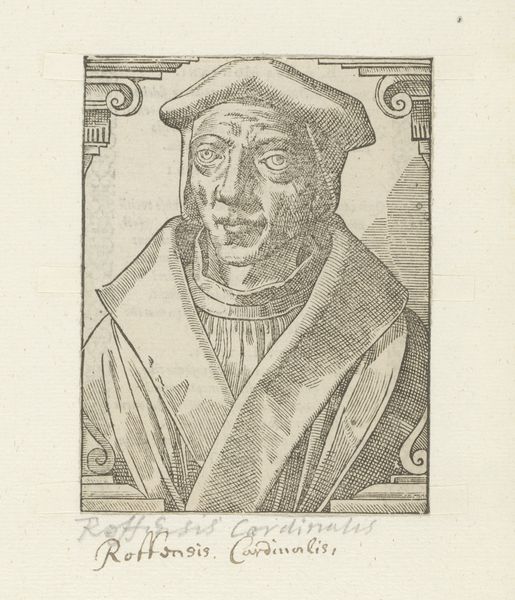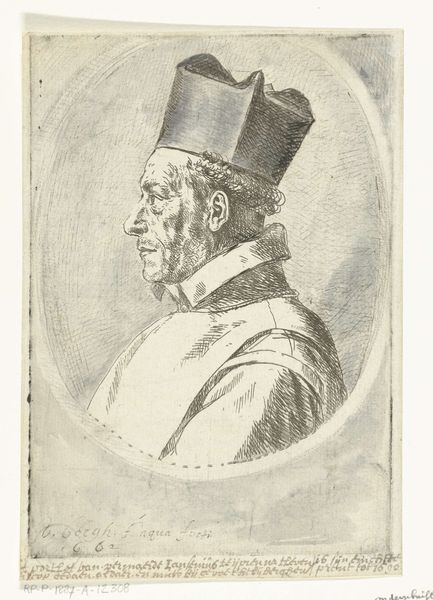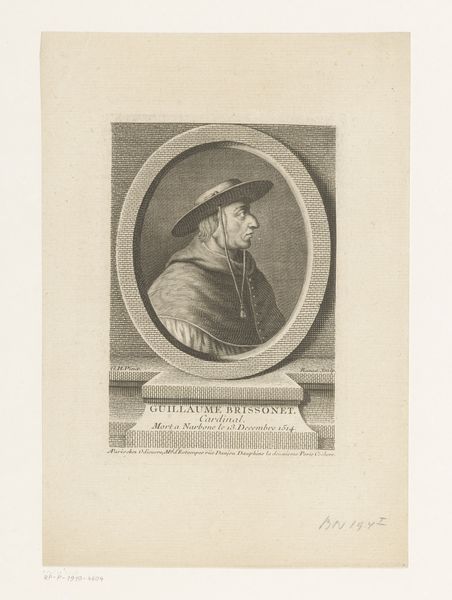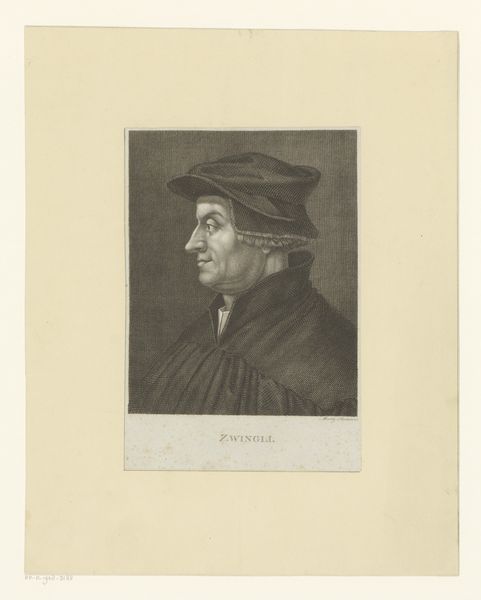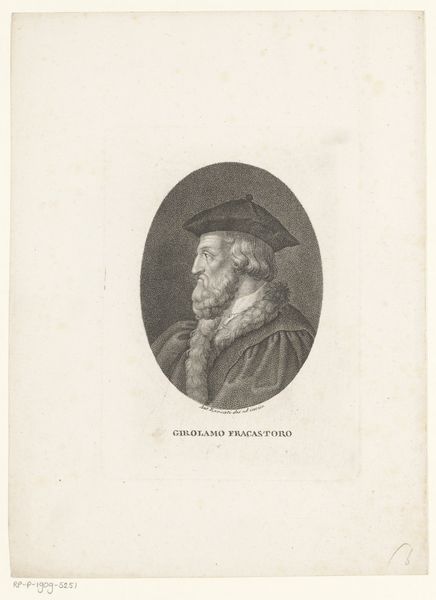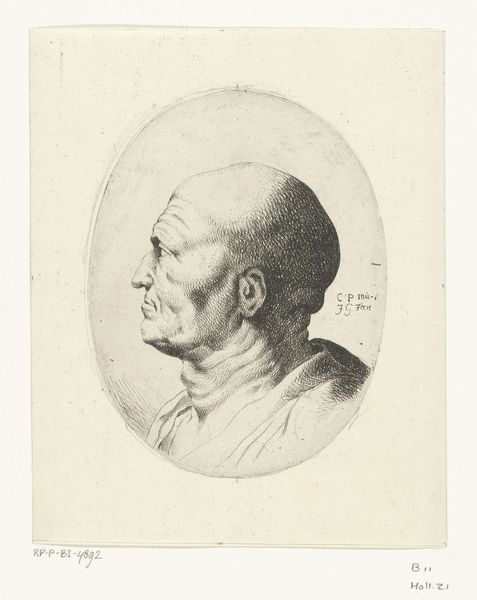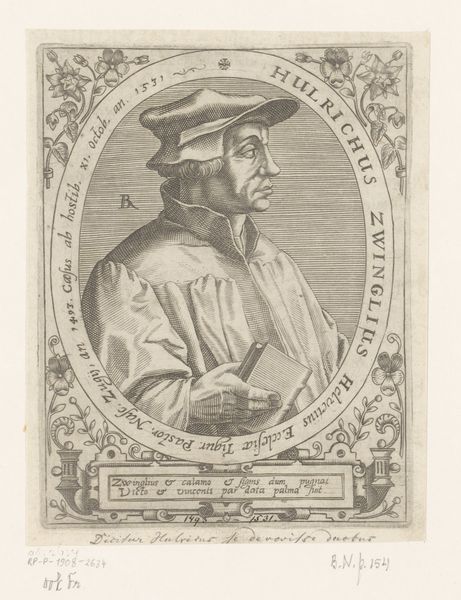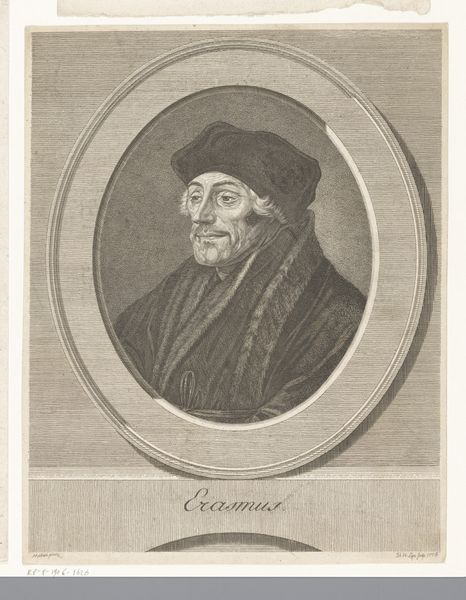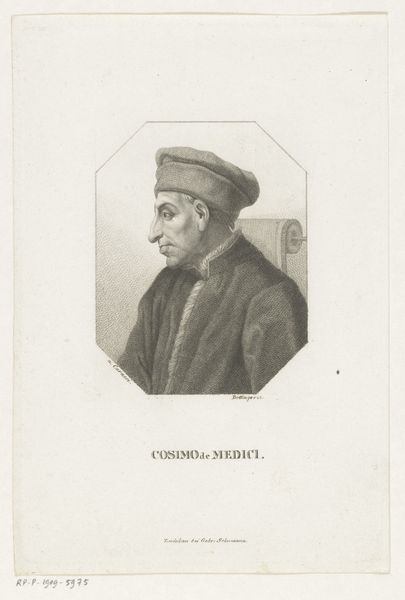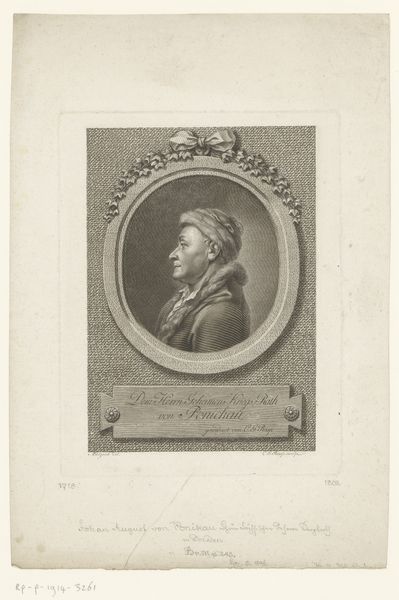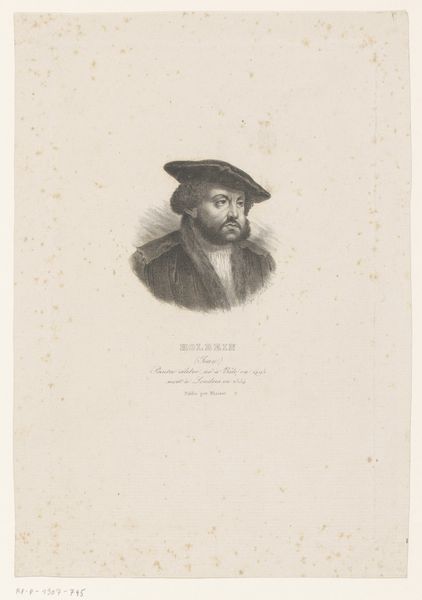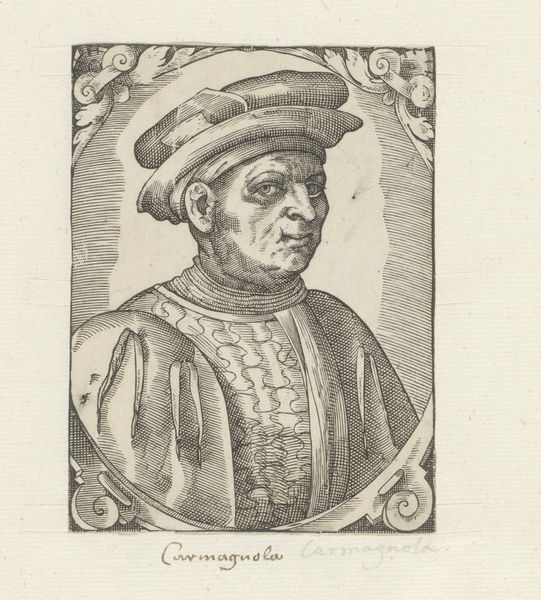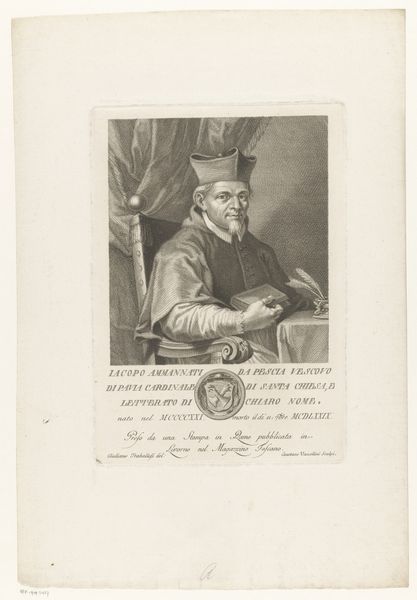
drawing, paper, pencil
#
portrait
#
drawing
#
neoclacissism
#
paper
#
pencil
#
history-painting
#
realism
Dimensions: height 440 mm, width 327 mm
Copyright: Rijks Museum: Open Domain
Curator: This is Siméon Joseph Petit’s “Portret van Erasmus,” created in 1809. Petit captured Erasmus of Rotterdam, a pivotal figure of the Northern Renaissance. It's a pencil drawing on paper. Editor: There's a contemplative quietness in this portrait, isn’t there? The subdued grey scale intensifies that effect. The hatching technique is meticulously consistent, giving a velvety quality to the rendering of fabric and skin. Curator: Indeed. Petit made this portrait at a time when neoclassicism, with its emphasis on reason and order, was at its peak. Remember, Erasmus advocated for religious tolerance and humanism during a time of intense religious conflict; that's what informed his life and legacy. How do you read that intention? Editor: I find the soft gradations of tone—applied via gentle pressure and hatching, typical of the Neoclassical devotion to formal perfection—make it an interesting choice when we think of Erasmus’s written attacks, filled with polemic. Curator: The choice to depict Erasmus in profile places a sharp focus on his features: the curve of his nose, the set of his jaw, giving viewers an image of quiet but assured intellect. Petit positions him in this legacy through the strategic use of a historical visual language, elevating him to that neoclassical Pantheon of Great Thinkers. Editor: Yet I cannot help wonder whether Petit wasn’t so skilled at representing different textures, because the fur trim looks to me like it merges tonally with his face. But perhaps this contributes to the unity of the composition! It gives everything a soft, blended effect that invites deeper looking. Curator: I read that homogeneity as potentially symbolic. Petit’s strategic combination could propose that even an intellectual giant like Erasmus could not divorce himself from the material constraints of his socio-historical context. Editor: Well, regardless of how we interpret the portrait, the beauty is surely in the visuality, that even in just shades of pencil on paper. Curator: Exactly. A portrait that asks us to reconsider the interplay between artistic representation, social narrative, and intellectual legacy. Thanks for joining me in exploring this striking portrayal.
Comments
No comments
Be the first to comment and join the conversation on the ultimate creative platform.
